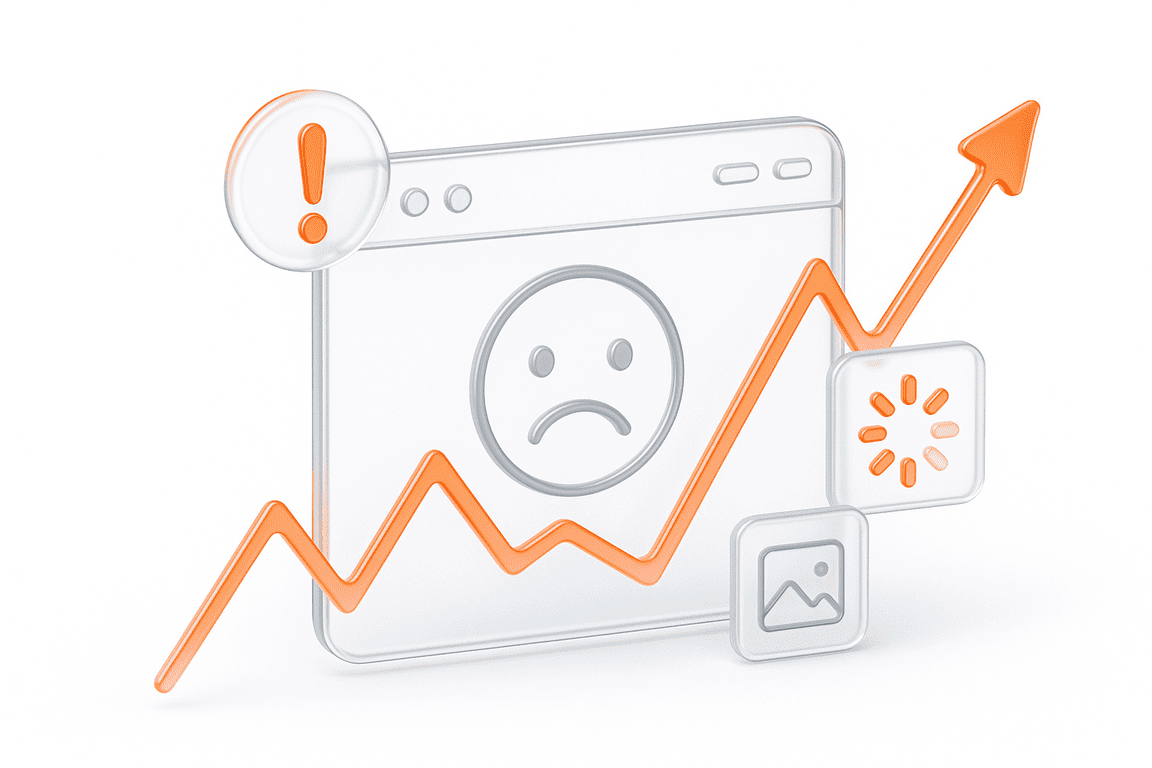Modern applications rely heavily on APIs (Application Programming Interfaces) to communicate and exchange data across different systems. At the heart of this interaction lies the API endpoint — a fundamental concept that defines where and how data exchanges happen. This guide explains clearly what an API endpoint is, outlines its importance, and provides practical insights into designing effective and reliable endpoints.
What Is An API Endpoint?
An API endpoint is a specific digital location, typically represented as a URL, where an API can be accessed and interacts with software applications. It serves as the interface through which clients communicate with servers, requesting data or triggering actions.
Each endpoint in API architecture is designed to handle a specific task. For instance, a blogging platform might have distinct API endpoints for managing posts (/posts), authors (/authors), or comments (/comments). When developers talk about an API endpoint URL, they refer to the complete web address — such as https://example.com/api/posts — used to send requests and receive responses.
To illustrate with a practical API endpoint example, consider a weather app. It might interact with an endpoint such as:
GET https://api.weather.com/v3/weather/forecast/dailyHere, the endpoint in API specifies exactly which resource the app intends to retrieve—in this case, daily weather forecasts.
The primary purpose of API endpoints is to facilitate clear, structured interactions between systems, enabling consistent data exchanges and simplifying software integration.
Why Are API Endpoints Important?
To understand what is endpoint in API design, let’s have a look at why these endpoints matter in first place:
In short, API endpoints ensure efficient, secure, and scalable interactions between applications and their components.
How Do API Endpoints Work?
To fully understand how do API endpoints work, let’s explore the technical details behind the scenes. Each interaction with an API endpoint involves multiple steps and several technical components that work together to fulfill requests and deliver responses:
Client Initiates a Request
The process begins when a client — such as a web application, mobile app, or IoT device — sends an HTTP request to an API endpoint URL. This request includes specific components that instruct the API precisely how to handle it:
nginx
GET https://api.example.com/users/123This example targets the resource /users, requesting details for user ID 123.
Example of a POST request with JSON body:
http
POST https://api.example.com/users
Content-Type: application/json
Authorization: Bearer eyJhbGciOiJIUzI1...
{
"name": "John Doe",
"email": "john@example.com"
}Endpoint Receives and Parses the Request
When the API receives the HTTP request at the specified endpoint in API, the server evaluates:
Authentication and Authorization
Secure APIs enforce authentication and authorization mechanisms:
Example Authorization header:
h
Authorization: Bearer eyJhbGciOiJIUzI1NiIsIn...Request Processing and Business Logic Execution
The API endpoint logic executes actions corresponding to the request type and parameters:
Response Generation
Upon completing the requested operations, the endpoint prepares a structured response:
Example successful JSON response:
json
HTTP/1.1 200 OK
Content-Type: application/json
{
"id": 123,
"name": "John Doe",
"email": "john@example.com",
"createdAt": "2025-06-17T08:30:00Z"
}Client Receives and Handles Response
Finally, the client receives the response. It then:
Caching and Optimization (Optional)
Advanced implementations use caching layers like Redis or CDNs (Content Delivery Networks) to optimize API response times, especially for frequently requested data. Clients or intermediaries (proxies) may cache responses for improved efficiency.
What Is the Difference Between a REST Endpoint and a GraphQL Endpoint?
When designing APIs, developers typically choose between REST and GraphQL endpoints. Here are their core differences:
| Parameter | REST Endpoint | GraphQL Endpoint |
| Schema Definition | No strict schema enforced; endpoints predefined and resource-based | Strongly-typed schema; explicitly defined by types and relationships |
| Data Fetching | Fixed structure; client retrieves entire resource from multiple endpoints if needed | Flexible; clients specify exact fields in a single query |
| Data Modification | Methods like POST, PUT, DELETE handle modifications explicitly per endpoint | Mutations explicitly defined in schema; single mutation can perform complex data changes |
| Response Format | Usually JSON or XML; responses predefined and uniform per endpoint | Usually JSON; dynamic responses tailored to client queries |
| Caching | HTTP caching mechanisms easily supported and integrated | Limited built-in caching; requires manual implementation or external libraries |
| Versioning | Typically via URL paths (e.g., /api/v1/users) | No explicit versioning; evolves schema continuously through deprecation and schema fields |
| Client-Server Communication | Stateless, separate endpoints per resource; multiple calls may be necessary for complex requests | Stateful query language; single call retrieves complex, nested data efficiently |
Choosing Between REST and GraphQL
Best Practices for Designing and Developing API Endpoints
To build robust, secure, and maintainable API endpoints, developers should adhere to proven practices that optimize usability, security, and performance. Here are essential technical guidelines and principles for developing high-quality API endpoints:
Create a Predictable and Intuitive API Endpoint Structure
A clear, intuitive, and standardized structure simplifies integration and reduces errors for clients. Consider these technical principles:
Implement Secure Authentication Mechanisms
Use robust authentication protocols:
Validate and Sanitize Input Data
API endpoints should rigorously validate incoming requests to avoid security vulnerabilities like SQL injection, Cross-Site Scripting (XSS), and malformed data attacks:
Example using Joi validation (JavaScript):
const Joi = require('joi');
const schema = Joi.object({
username: Joi.string().alphanum().min(3).max(30).required(),
email: Joi.string().email().required(),
});
const result = schema.validate(request.body);Clearly Document Every API Endpoint
Clear, comprehensive documentation significantly enhances usability and adoption. Best practices include:
Implement Robust Error Handling
Explicit, consistent error handling improves client resilience and debugging:
Example structured JSON error response:
HTTP/1.1 400 Bad Request
Content-Type: application/json
{
"error": {
"code": "INVALID_INPUT",
"message": "Username is required and must be at least 3 characters.",
"details": {
"field": "username",
"provided": ""
}
}
}Continually Test and Monitor Your API Endpoints
Regular monitoring and testing of your API endpoints is crucial to ensure ongoing availability and performance:
Version Your API Properly
Proper API versioning helps manage changes without breaking existing integrations:URL-based versioning (recommended):
/api/v1/users
/api/v2/usersFinal Thought
Clearly defined and effectively structured API endpoints shape the quality and performance of an API. They influence developer experience, integration ease, and overall application reliability. Mastering endpoint design requires anticipating how your endpoints will be consumed, managed, and scaled over time. Ultimately, a thoughtfully developed API endpoint strategy empowers your API to adapt gracefully as your applications and user base evolve, significantly enhancing your API’s long-term value.
Related insights in blog articles
How Website Performance Impacts E-Commerce Sales and Cart Abandonment

Every e-commerce store has mere milliseconds to make the right impression on shoppers. When prospects land on a product page, they assess every single metric, and e-commerce website performance and speed are the most critical ones. In most scenarios, impatient users will bounce instantly — at the slightest hint of latency caused by high loads […]
10 Signs Your Website Can’t Handle Traffic Spikes: Everything you need to know

Your campaign goes live, clicks start pouring in, and traffic shoots up fast. It’s the moment you’ve been waiting for, until everything slows down. Pages take ages to load, checkout freezes, and visitors disappear before they can buy. It’s a frustrating twist: the success of your marketing draws in more people than your website can […]
Why Averages Lie: Mathematical Methods for Load Testing

Relying on “average” metrics alone makes load testing surprisingly inaccurate. In this article, we’ll show how to avoid the usual traps and walk through practical techniques for mathematically modelling a workload profile, from analyzing variance and correlations to spotting Simpson’s paradox and validating the final model. When a company moves to a new system, the […]
DevDays Europe Conference 2026 – Advance Your Software Development Expertise

DevDays Europe is the ultimate software development conference that aims to bring together the brightest minds and innovators in the software development community. Join the conference for an immersive experience filled with transformative insights, collaborative opportunities, and the latest cutting-edge technology. The DevDays Europe 2024 will be happening both on-site and online, allowing everyone to join the event in their preferred format.
Be the first one to know
We’ll send you a monthly e-mail with all the useful insights that we will have found and analyzed
People love to read
Explore the most popular articles we’ve written so far
- Top 10 Load Testing Tools for 2025: The Deep Dive Sep 9, 2025
- Cloud-based Testing: Key Benefits, Features & Types Dec 5, 2024
- Benefits of Performance Testing for Businesses Sep 4, 2024
- Android vs iOS App Performance Testing: What’s the Difference? Dec 9, 2022
- How to Save Money on Performance Testing? Dec 5, 2022

